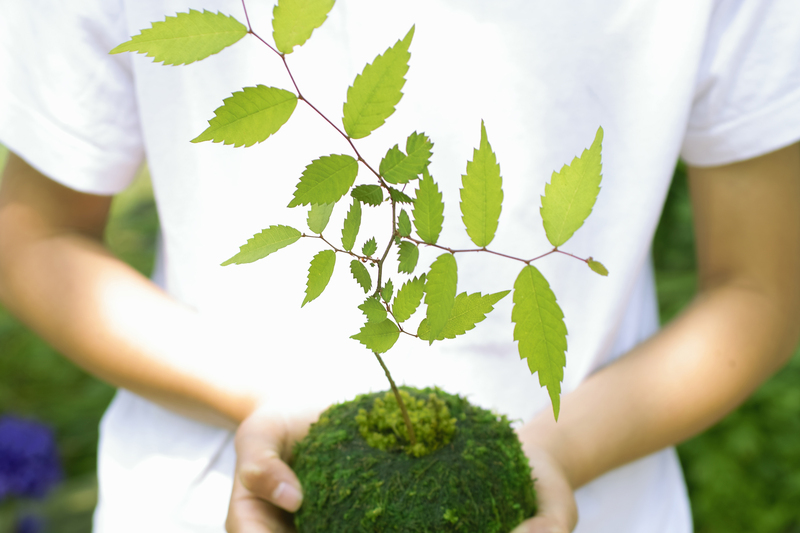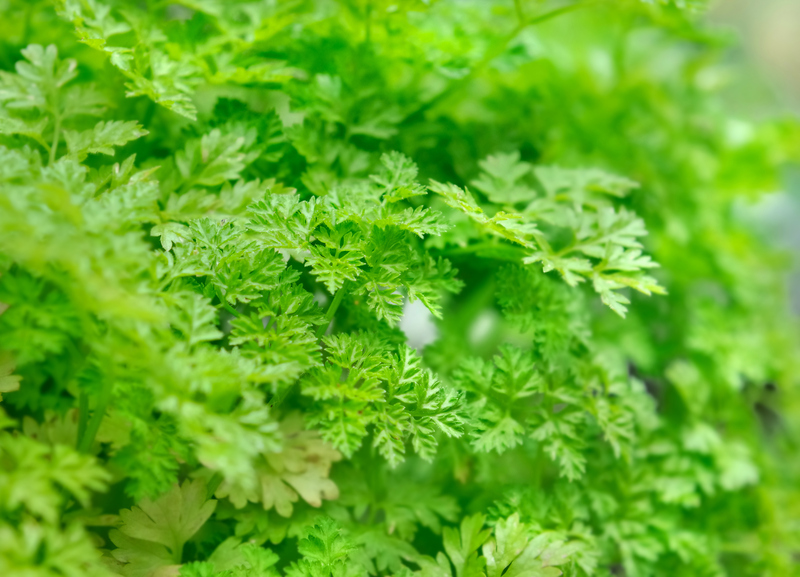Harness the power of gardening to fight climate change
Posted on 28/06/2025
Harness the Power of Gardening to Fight Climate Change
As the world faces the escalating challenge of climate change, individuals everywhere are seeking empowering strategies to make a positive difference. One of the most effective - and enjoyable - solutions comes right from our own backyards. Harnessing the power of gardening to combat climate change isn't just for environmentalists or passionate horticulturists; it's a practical path everyone can take. In this comprehensive article, we'll explore how sustainable gardening practices can transform your garden into a miniature climate ally, mitigate carbon emissions, and foster biodiversity - all while creating a greener, healthier space for you and your community.
Why Is Gardening So Important in the Climate Fight?
Gardening, when thoughtfully practiced, extends far beyond growing flowers or vegetables for pleasure. Eco-friendly gardening brings immense benefits to the planet's health. But how, exactly, can gardeners contribute to the fight against global warming?
- Carbon Sequestration: Gardens, especially those featuring trees and perennial plants, absorb carbon dioxide (CO2), locking it away in plant tissues and soil.
- Biodiversity Boost: A well-planned garden supports pollinators, birds, and beneficial insects, all of which contribute to ecological balance.
- Reducing Food Miles: Growing your own fruits and vegetables reduces emissions associated with packaging and transporting produce.
- Limiting the Heat Island Effect: Green spaces cool the environment and help offset warming in urban areas.
- Resource Efficiency: Smart gardening minimizes waste, conserves water, and nurtures healthy soil.
Let's dive deeper into these benefits, exploring actionable ways you can turn your garden into a climate change solution.

How Does Gardening Help Mitigate Climate Change?
1. Capturing Carbon: The Secret Power of Soil and Plants
The world's soils contain more carbon than all plant life and the atmosphere combined. By harnessing climate-smart gardening techniques, you can increase your soil's ability to sequester carbon:
- Grow Perennials: Unlike annual plants that need to be replanted each season, perennials store more carbon in their roots and the soil year after year.
- No-Till Gardening: Avoid disturbing the soil too much; minimal tilling keeps carbon stored underground rather than releasing it as CO2.
- Composting: Transform kitchen and garden waste into "black gold." Composting reduces methane emissions from landfills while adding organic matter to your soil.
- Plant Trees and Shrubs: These woody plants capture and store significantly more carbon over time compared to smaller annuals.
2. Sustainable Gardening Practices Make a Difference
Sustainable gardening practices lessen environmental impact, conserve resources, and enhance your garden's role in stabilizing the climate.
- Water Wisely:
- Install rain barrels or soaker hoses for more efficient watering.
- Mulch beds to retain soil moisture and suppress weeds.
- Go Organic:
- Avoid synthetic fertilizers and pesticides, which are energy-intensive to produce and can harm beneficial organisms.
- Use organic alternatives and promote integrated pest management (IPM).
- Create Wildlife Habitats:
- Install birdhouses, bee hotels, or butterfly-friendly plants to support urban biodiversity.
- Let a corner of your garden go a little wild for nature!
3. Growing Your Own Food: A Delicious, Low-Carbon Solution
Did you know that the farm-to-fork journey of most produce racks up significant greenhouse gas emissions? Homegrown fruits and vegetables can dramatically reduce your carbon "foodprint."
- Fewer Food Miles: Vegetables grown in your own soil don't need to travel thousands of miles to reach your plate.
- Seasonal Eating: Eating what you grow encourages a diet based on seasonal produce, further minimizing environmental impact.
- Less Packaging Waste: Fresh, homegrown foods require no plastic wrap or packaging.
Transforming Your Garden into a Climate Resilience Powerhouse
Whether you have acres of land or a balcony planter, climate resilience should be at the heart of your garden planning. Here's how to design your space for maximum environmental benefit:
Select Climate-Appropriate Plants
- Native Species: Choose plants native to your region; they require less water and maintenance.
- Drought-Tolerant Varieties: These plants can survive on less water, making them ideal for hotter, drier climates.
- Pollinator-Friendly Plants: Add flowering species that provide nectar and habitat for bees, butterflies and other pollinators.
Use Regenerative Methods to Build Healthy Soil
- Add Compost and Mulch: Regularly feed your soil with organic matter to improve structure, water retention, and fertility.
- Practice Crop Rotation: Rotate crops to foster biodiversity and prevent soil nutrient depletion.
- Grow Cover Crops: Plants like clover and vetch protect and nourish the soil over winter and prevent erosion.
Reduce Your Garden's Carbon Footprint
- Manual Tools Over Power Tools: Use hand tools instead of petrol-powered equipment to cut emissions.
- Choose Eco-Friendly Materials: Opt for recycled, salvaged, or sustainable products whenever possible - from plant pots to fencing.
- Limit Synthetic Inputs: Each chemical fertilizer or pesticide has a climate cost; the fewer you use, the smaller your impact.
Gardening for Biodiversity and Ecosystem Support
The loss of biodiversity is one of the major drivers of climate chaos. By cultivating a biodiverse garden, you're not just fighting climate change - you're helping restore the planet's natural balance.
- Plant a Variety of Species: Diversity ensures a robust and resilient garden ecosystem.
- Include Trees and Hedges: They provide habitat for birds, insects, and small mammals, all essential for a functioning ecosystem.
- Avoid Invasive Plants: Stick to species that thrive naturally in your region.
- Create a Pond or Water Feature: Beneficial for amphibians and a variety of insects.
Urban Gardening: City Solutions for Climate Action
Don't have a traditional backyard? Urban dwellers can still leverage gardening to combat climate change:
- Rooftop Gardens: Convert flat roofs into productive, cooling green spaces.
- Balcony or Patio Plans: Use containers, vertical gardens, and wall planters.
- Community Gardens: Join a local project; they're fantastic for social ties and urban biodiversity.
- Guerrilla Gardening: Transform neglected public spaces with flowers and edibles.
Practical Steps to Begin Your Climate-Smart Garden
1. Start Small, Dream Big
- Begin with just a few climate-smart planting beds or containers.
- Gradually expand as you gain confidence and skills.
2. Compost Everything You Can
- Set up a home compost bin or pile for food and garden waste.
- Compost feeds your soil, eliminates landfill emissions, and makes your garden more resilient.
3. Use Water Responsibly
- Capture rainwater for irrigation.
- Water early in the morning or evening to reduce evaporation.
4. Swap Lawns for Liebes
- Lawns are water and fertilizer intensive. Switch sections to wildflowers, edible beds, or native grasses to boost biodiversity and reduce emissions.
5. Educate and Inspire Others
- Share your success stories and climate victories with neighbors, friends, or on social media.
- Join gardening clubs or environmental groups to amplify your impact.
Gardening Myths Busted: What You Really Need to Know
Some myths persist around the role of gardening in climate change mitigation. Here are the facts:
- Myth: Gardening has a negligible impact on climate change.
Fact: When multiplied across millions of homes, the collective effect on carbon absorption, biodiversity, and urban cooling is monumental. - Myth: Lawns are environmentally friendly.
Fact: Traditional lawns consume huge volumes of water, fertilizer, and are poor carbon sinks. Swapping lawn for gardens is a positive step. - Myth: Gardens attract only pests.
Fact: With smart planting, gardens attract a healthy web of beneficial organisms, from birds to bees, forming resilient ecosystems.
Case Studies: Gardeners Making an Impact
- The Edible Forest Garden: In urban neighborhoods, "food forests" blending fruit trees, berries, herbs, and powerfully absorb carbon while supplying fresh produce to communities.
- Wildlife Corridors in Suburbia: Homeowners connecting gardens with hedgerows and wildflower strips help birds and insects move safer, sustaining climate-resilient populations.
- Community Composting Initiatives: Groups collecting food scraps citywide turn "waste" into rich, carbon-sequestering compost for gardens and parks.

Future-Proof Your Garden: Adaptation and Innovation
The climate is changing - but so can our gardens.
- Try New Varieties: Look for plants bred for heat-, drought-, or flood-resistance.
- Flexible Planting Calendars: Monitor shifting weather patterns and plant according to the new seasons.
- Technological Solutions: Use smart irrigation, plant sensors, or community apps to optimize your garden's efficiency and climate benefits.
- Collaborate: Work with neighbors to create "green corridors" or join larger rewilding initiatives.
Conclusion: Every Garden Matters in the Climate Challenge
Harnessing gardening to fight climate change is a hopeful, hands-on way to reclaim agency in the face of uncertainty. Whether you plant a tree, compost kitchen waste, or introduce more pollinator-friendly flowers, every action counts. Together, individual gardens can become a global force for carbon storage, resource conservation, biodiversity, and planetary healing.
It's time to dig in and let your garden grow green for the future. Every seed, every compost pile, every tree - they all matter. Let's transform our spaces, our communities, and our climate future - one garden at a time.
Ready to Harness the Power of Gardening for Climate Action?
- Start today: Pick one new climate-friendly gardening technique to try this week.
- Share your journey: Inspire others by posting your progress online or connecting with local eco-garden groups.
- Keep learning: Stay informed about sustainable gardening trends, and always look for ways to enhance your garden's ecological value.
Together, we can cultivate a greener, more resilient planet from the ground up!

